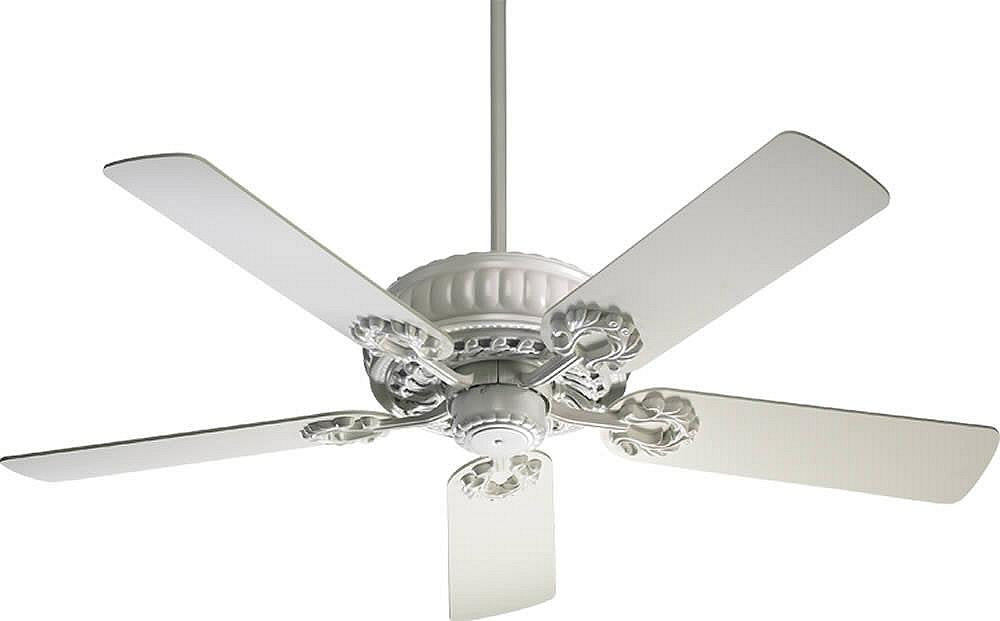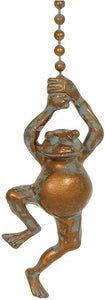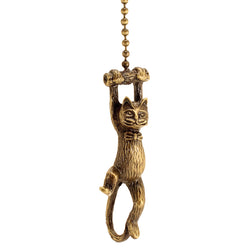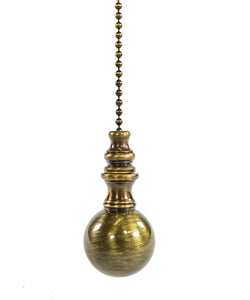Quorum 52"W Empress 5-Blade Ceiling Fan Studio White

52"W Empress 5-Blade Ceiling Fan Studio White
A great way to stay cool -- Ceiling fans can keep you cool during the hot summer days just as much as an air conditioning system can. Plus, you do not have to deal about those expensive maintenance and repair costs.Save up on energy -- This fan is Energy Star certified for low energy consumption, and power and money savings. But it does not mean that it has skimped on performance.
Perfect for -- With its Studio White Finish-Matte finish, this ceiling fan is perfect for homeowners who are into traditional styling. Combined with its intricate detailing, this will surely be a statement piece in your living room.
Ideal for winter as well -- By changing the direction the fan rotates, it can push warm air down and keep you cozy enough for those cold weathers. A switch on the fan easily alternates the direction.This Empress Ceiling Fan, finished in attractive Studio White, is the perfect touch to complement your home or office decor.
- Studio White Finish-Matte Finish
- Traditional style
- 5 x Studio White Blades
- 5 blades with a 52" total blade-span and 14-degree blade pitch
- Overall fan height: 14.37"
- Height from ceiling to bottom of blades: 13.11"
- Housing Width: 13.31"
- Motor Size: 188mm x 15mm
- Features a 16-Pole Motor
- Detachable Switch Cup for optional light kit installation (light kit not nicluded)
- Skirted Blade Arms
- Three unique speed settings
- Amps: 0.65 on High, 0.44 on Medium, 0.23 on Low
- Watts: 73 on High, 33 on Medium, 9 on Low
- Revolutions per Minute: 154 RPM on High, 102 RPM on Medium, 57 RPM on Low
- Includes a pull-chain switch with High/Medium/Low/Off settings
- Fan may be run in reverse using a switch on the fan motor
- Includes 80" of Lead Wire
- Limited Lifetime motor warranty
- Does NOT include a remote control
- Compatible with the 7-3000 and 7-1401-0 Remote Controls from Quorum (not included)
- Energy Star certified for low energy consumption and power/money savings
- Includes 3.5" and 6" downrods
- Part of the Empress Collection by Quorum International
- Weight: 23 lbs
|
|
|||||
| Revolution Speed (RPM - Revolutions per Minute) | Air Flow (CFM - Cubic Feet of Air Flow per Minute) | Electricity (Watts - Electricity used not including any Lights) | Efficiency (CFM/Watt - Cubic Feet of Air Flow per Minute per Watt used - higher is better) | AMPs (Amperage of Electrical Current used) | |
| HIGH Speed | 154 | 6080 | 68 | 89 | 0.65 |
| MEDIUM Speed | 102 | 33 | 0.44 | ||
| LOW Speed | 57 | 9 | 0.23 | ||
| Efficiency is the cubic feet of air that can be moved in one minute if the fan were to use 1 watt of electricity, and can be used to compare energy-efficiency among different ceiling fans. The higher this number the more energy-efficient the fan is. This ceiling fan's airflow efficiency is above average, compared to fans with a 52" blade span. By comparison, other regular-sized ceiling fans with a 52" blade span typically provide an airflow efficiency ranging from 71 to 100 cubic feet per minute per watt. | |||||

What is an Ceiling Fan?
 A ceiling fan is a fairly large ceiling-mounted fan which can rotate clockwise or anticlockwise. In one direction the fan blows air downward, while in the other it draws air upwards. Some fans come equipped with a light fixture to double as a central light. The fan is a hardwired fixtures so has to be installed electrically. Typically it is used with a wall switch or remote control. Ceiling fans can help keep you cool in summer and also warmer in winter by circulating the air.
A ceiling fan is a fairly large ceiling-mounted fan which can rotate clockwise or anticlockwise. In one direction the fan blows air downward, while in the other it draws air upwards. Some fans come equipped with a light fixture to double as a central light. The fan is a hardwired fixtures so has to be installed electrically. Typically it is used with a wall switch or remote control. Ceiling fans can help keep you cool in summer and also warmer in winter by circulating the air.
Ceiling Fan Benefits
- Circulates air for healthier breathing.
- Reversible direction for summer/winter.
- Blows air onto bodies for direct cooling.
- Draws hot air upwards for ambient cooling.
- Optional speeds for varying effect.
- May add to lighting (if light is included or addedd).
- Saves on electrical heating bills.
- Keeps rooms fresher and helps remove odors.
- Provides a gentle breeze over a bed or chair.
- Usually can be manually (pull chain) or wall (switch) operated.
- Helps to remove or distribute hot rising air.
Traditional Style
Classic in nature, yet elegant by design best describes the timeless appeal of predictable yet dignified lines and curves. Traditional Style Lighting prides itself on stately structure, beautiful ornate details, and reliable designs that tell a story of enduring appeal and craftsmanship. It’s a tried-and-true style that is reliable, and speaks of discriminating and taste of a steadfast lifestyle.
For which rooms?
A ceiling fan needs enough headroom, so is ideal over some furniture such as a couch, seating area or bed. See hugger fans for maximizing headroom. Fans are most often used in living rooms, family rooms and bedrooms, where people might be dwelling for a longer period of time.
Placement/Layering
A fan is best positioned either centrally in the room or above a main seating or sleeping area. If the fan has a light it can help to light the room. We recommend adding either wall lights or some lamps to fill out the space.
Mounts to the Ceiling
Attaches to a ceiling. The ceiling should be flat, unless the fan supports sloped/vaulted ceilings. A small canopy will conceal the electrical installation.
Installed by an Electrician
An electrician or person with electrical installation knowledge will need to permanently wire the ceiling fan into the building's electrical supply.
Resources
Learn how to choose ceiling fans with our Energy Star lighting
We've shopped for you!
You're getting the the lowest prices, guaranteed!
Thousands of items are on sale every day. Plus you're tax-free unless you live in Wisconsin.
Want a different price? Contact us for a personalized quote.
Safely checkout with our world-class encryption.
Trusted by over 100,000 customers, your private and payment data is secure and will not be shared.
We accept Visa, Mastercard, Discover and Paypal. Credit cards can also be processed through Paypal.
Spend $49.00 to get Free Shipping (contiguous USA).
Most other items ship for $9 in 1-3 business days (contiguous USA). QuickShip items ship out the next business day.
Depending on your location, shipments take on average 3-5 business days or up to 7-10 from coast to coast. We ship from multiple locations.
You will receive tracking numbers by email when your items ship out, via Fedex, UPS or USPS.
You'll be able to track the packages online or on our site.
You can also talk to our team of experts at any time, or Live Chat.
Enjoy 30 days for easy returns. See our return policy for details.
We replace breakages/damages/missing parts etc for free.
Every item is covered under our extended 1-year warranty.





